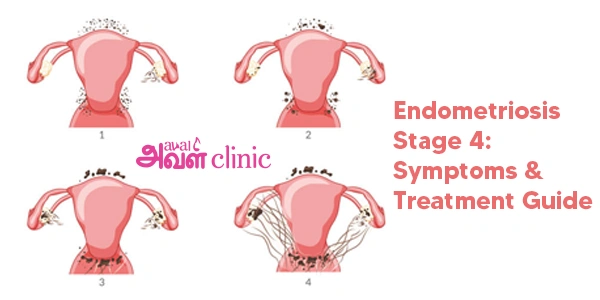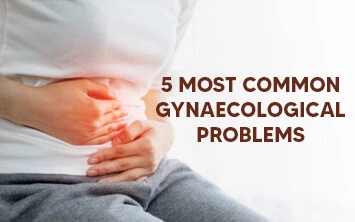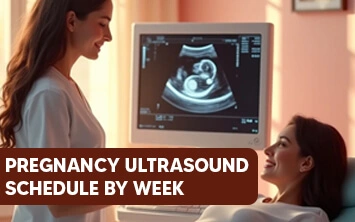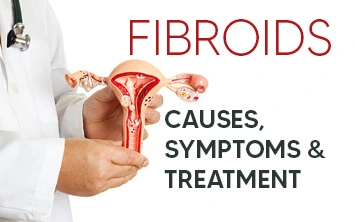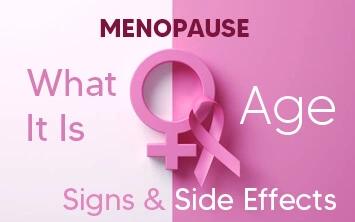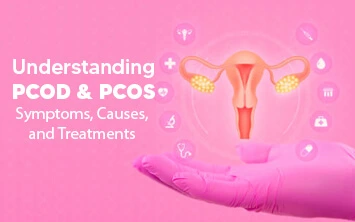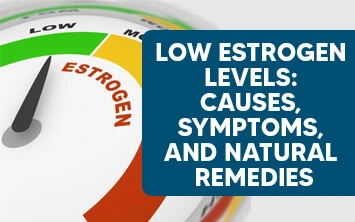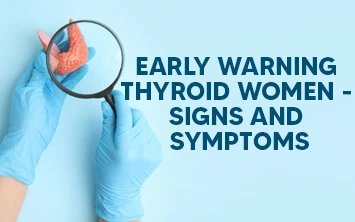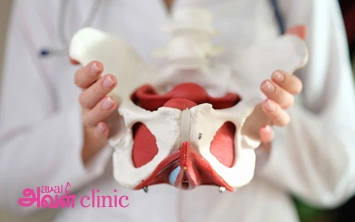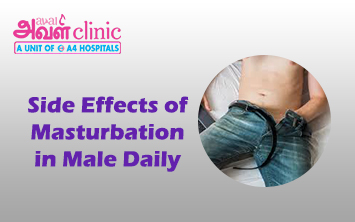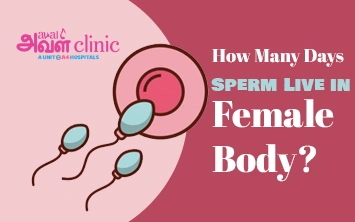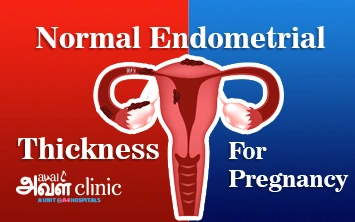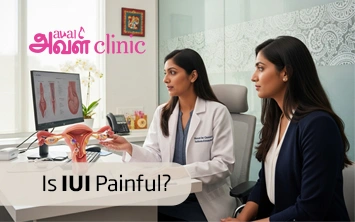Published on: May 17, 2025
Author: Admin
Endometriosis is a disorder where tissues alike endometrium (uterine lining) gets developed outside the uterus. It may develop in any region within the pelvic organs. These misplaced tissues have the tendency to respond to hormonal changes similar to the endometrium, specifically during every menstrual cycle. This may potentially result in causing to thicken and shed like the uterine lining, which contributes to the development of unbearable pain in the pelvic region, scarring, as well as inflammation.
There are 4 stages of endometriosis.
- Stage 1 – Minimal
- Stage 2 – Mild
- Stage 3 – Moderate
- Stage 4 – Severe
A woman with endometriosis stage 4 may experience intense pain during intercourse and bowel movements. This happens as the condition is characterised by extreme growth of the endometrial tissue in different parts of the pelvic region. Stage 4 endometriosis is often referred to as the most severe condition. The condition may exhibit negative impacts like infertility and ovarian cancer.
Many women might be worried of stage 4 endometriosis life expectancy since the condition is considered to be severe. Stage 4 endometriosis may generally not affect the life expectancy of the woman. However, it may cause intense pain and complications.
In this blog, let’s discuss the symptoms associated with the condition in detail, along with the treatment options. This may help you to keep informed and have better communication with the healthcare provider more effectively.
Endometriosis Stage 4
Endometriosis Stage 4 is the most severe form, characterized by widespread deep implants, large ovarian cysts (endometriomas), and extensive scar tissue or adhesions. This stage often causes intense pelvic pain, heavy periods, and significant fertility problems. Early diagnosis and specialized treatment are important to manage symptoms and improve quality of life.
Stage 4 Endometriosis Symptoms
The stage 4 endometriosis symptoms may involve:
Severe pelvic pain
Severe pelvic pain is the primary symptom of stage 4 endometriosis. The pain may be deliberately caused during intercourse and menstruation. This interrupts the woman from performing daily activities.
Painful bowel movements
Endometriosis means the development of the endometrial tissue outside the uterus, including the rectum. This may primarily lead to the development of discomfort and intense pain during bowel movements. The endometrial tissue growth near the rectum region may also cause diarrhoea, constipation and bloating.
Painful Intercourse
A woman experiencing pain during and after intercourse can be a significant indication of endometriosis, especially stage 4.
Irregular Periods
Menorrhagia is also known as heavy menstrual flow. Women with the symptom can be a clear indication of endometriosis, especially stage 4. Some women have shared their experience of noticing light spotting or bleeding between their menstrual cycles due to the condition.
Pain when Urinating
Beyond the uterus, the endometrial tissue development (endometriosis) may involve deep adhesions and multiple organs, including the bladder. This may significantly happen during stage 4 condition. The presence of endometriosis around the bladder may cause severe pain when urinating.
Infertility
A woman with stage 4 endometriosis may experience infertility issues. This happens as the condition involves deep implants, scarring, and large ovarian cysts. This may primarily result in difficulty getting pregnant.
Other Symptoms
Some women may also experience low mood, anxiety and fatigue because of the endometriosis.
Struggling with Severe Endometriosis? We're here to help.
Call Now: 80047 80048Stage 4 Endometriosis Treatment
It is essential to understand that there is no permanent cure for endometriosis at any stage. However, your healthcare provider may suggest certain treatment options to manage the symptoms. Surgery is often suggested to treat stage 4 endometriosis. Even though the surgery is performed to remove the endometrial tissue outside the uterus, experts claim that there are increased chances that it can reappear within a few years.
Your healthcare provider may prepare a treatment plan based on certain factors. They are:
- The desire for pregnancy,
- Medical history of the patient,
- Location of the endometriosis,
- Tolerance level of the patient towards therapies and procedures,
- And the severity of the symptoms associated with the condition.
Medications
Pain-relieving medications may be prescribed by your healthcare provider to help manage the pain, like menstrual cramps and pelvic pain. Over-the-counter medications like ibuprofen may be recommended to help alleviate the symptoms.
Hormonal therapies
Hormonal therapies are focused on minimising the progression of endometrial growth. This is done by suppressing the menstrual cycle through reducing the excessive production of estrogen and other ovarian hormones. The therapy is significantly helpful in preventing the thickening of the endometriosis during menstruation. The medications used in hormonal therapy may include:
- Hormonal therapies may be used in combination with progesterone and estrogen. These medications may come in the form of pills, vaginal rings, patches, implants or IUDs and shots. The treatment is often suggested to women who experience heavy bleeding during menstruation.
- Hormonal birth control may also come in progestin-only options. The medication is helpful in suppressing menstruation.
- Gonadotropin-releasing hormone antagonists are another hormonal medication used to suppress menstruation. This is generally prescribed to alleviate the pain associated with the endometriosis condition.
- Gonadotropin-releasing hormone agonists may be used to stop the production of estrogen and progesterone hormones from the ovaries.
Note that these medications are not usually prescribed by the healthcare provider to the woman who is planning to get pregnant. Hence, having an open communication with the specialist regarding your desire for pregnancy before starting the treatment is highly recommended.
Surgical Options
Surgical options to treat stage 4 endometriosis may include:
1. Laparoscopy
Laparoscopy is the most commonly used minimally invasive procedure by healthcare providers. The procedure is predominantly helpful to diagnose endometriosis and treat it simultaneously as well.
The method is executed by making a few incisions in the abdomen, which is typically performed by an expert specialist. Through these incisions, the specialist may pass through the flexible, lighted tube with a camera at its end. In medical terms, the tube is known as a laparoscope. This allows the provider to view the reproductive organs of the woman directly using the monitor.
Using tiny tools like scalpels and heat like lasers, the procedure is performed to remove or destroy the endometriosis, endometriomas, and scar tissue.
In rare scenarios, the healthcare provider may use both techniques based on the location, size and depth of the endometriosis. Generally, endometriosis at stage 4 involves both techniques. For instance, removal of endometriosis is often preferred when the condition is deeply infiltrated, whereas destruction is preferred when it is superficial (less deep).
2. Hysterectomy
Hysterectomy is the procedure generally suggested to patients who don’t plan to get pregnant. The option is considered when the patient experiences severe pain because of the stage 4 endometriosis. In medical terms, hysterectomy involves the removal of the uterus, sometimes even the ovaries (oophorectomy).
The removal of the uterus predominantly results in a decrease in the secretion of estrogen hormones. This may typically result in reducing the development of endometrial tissues. It also eliminates the potential chances of being pregnant.
If the hysterectomy is strongly considered by the healthcare provider to treat the endometriosis stages and you desire to have a pregnancy, having open communication is highly recommended. The provider may suggest options to freeze your eggs and opt for surrogacy. This may enable you to become a parent through assisted reproductive techniques like IVF.
It is essential to remember that a hysterectomy is suggested for the woman who experiences unbearable pain because of endometriosis. This enables them to deliver a permanent solution for pain and eradicate heavy menstrual flow, which is associated with the very same condition.
3. Laparotomy
Laparotomy is not the common method used to treat endometriosis. The procedure is recommended by the healthcare provider only when methods like laparoscopy are not feasible. Other reasons may include when the condition is severe and complicated by its location.
Laparotomy is an open abdomen surgery, which is usually done by an expert specialist. Through making the larger incision, the surgery is executed. The incision is generally made on the abdomen of the woman. This allows him to have easy access to the endometrial implants, which may be located in difficult-to-reach regions. It also allows the provider to have direct visualisation and removal of the endometrial tissues without any hassle. The procedure is done using general anaesthesia as it involves a larger incision.
Summary
Surviving with stage 4 endometriosis may be quite challenging. Other than medications and surgeries, there are certain strategies that can help cope with the condition. They are practising pelvic floor exercises to strengthen their pelvic organs, having a balanced diet, avoiding caffeine and alcohol, managing stress through meditation and yoga, and choosing complementary therapies. The complementary therapies may include herbal therapy, acupuncture, chiropractic care, massage, and Ayurveda.
Before opting for these natural strategies, diagnosing the size, location and stage of the endometriosis is crucial.
If you still have any concerns, having a consultation with experts at Aval Clinics is recommended. They can guide you.
Contact us today for expert advice and personalized care:

